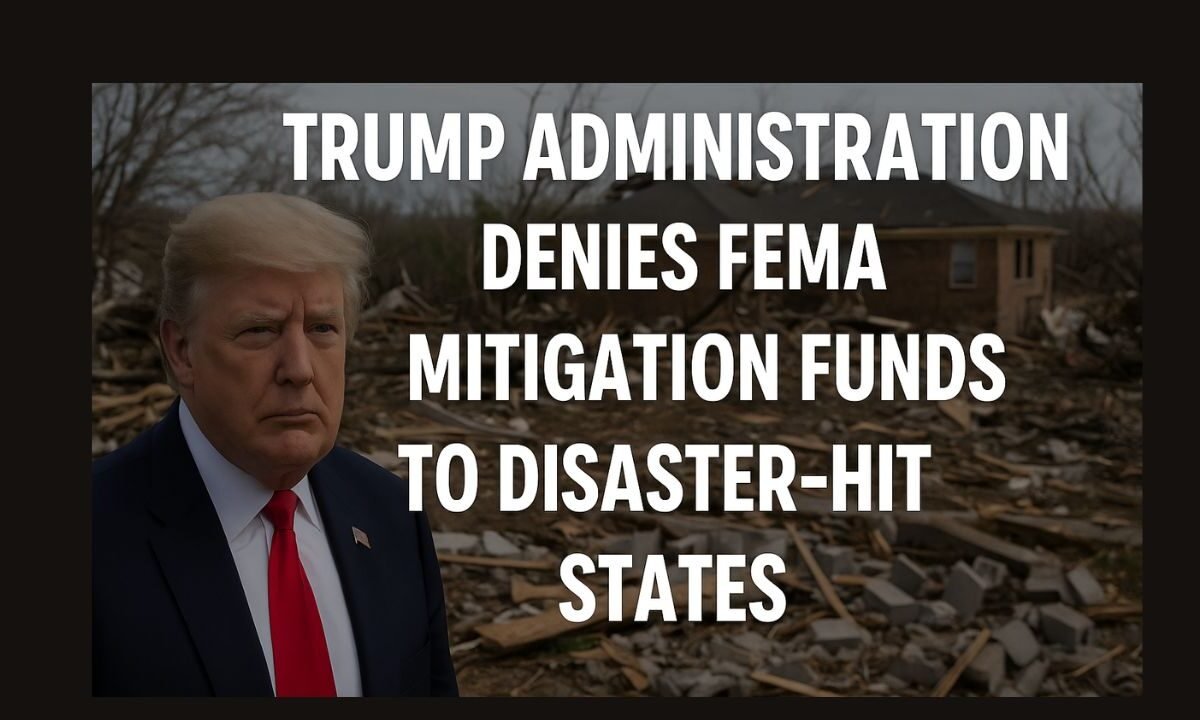The Trump administration has been denying disaster mitigation funding to states facing extreme weather events, causing concern among officials and lawmakers.
This marks another significant step in President Donald Trump’s plan to reduce the role of the Federal Emergency Management Agency (FEMA).
Mitigation Grants Blocked Despite Widespread Damage
Since March, states like Oklahoma, Missouri, Iowa, and Mississippi have experienced severe storms, high winds, and wildfires, prompting them to request assistance through FEMA’s Hazard Mitigation Grant Program.
This program is intended to help communities invest in infrastructure and planning to prevent future disasters.
However, under the current administration, automatic approval of these grants, as seen during the Biden administration, has stopped. According to Bloomberg, the Trump administration has already rejected seven mitigation grant requests in spring 2025, with six more still pending review.
Oklahoma’s Tragic Wildfires and Denied Funding
One of the denied requests came from Oklahoma, which was devastated in March by fast-moving wildfires and violent winds that claimed lives and destroyed homes. Among the properties lost was Governor Kevin Stitt’s farmhouse, completely consumed by the flames, according to the Oklahoma Department of Emergency Management.
While FEMA did approve Fire Management Assistance Grants (FMAGs), which reimburse for costs related to firefighting and emergency response, it refused to approve mitigation funding meant to support long-term rebuilding and disaster prevention.
This denial came in early June, despite clear and significant losses.
The repeated denial of FEMA mitigation grants by the Trump administration has stirred confusion and concern among lawmakers and disaster-struck communities.
With more requests under review, state officials are left wondering about the criteria for approval and how to prepare for future disasters without adequate federal support.
As climate events become more frequent, these decisions could have far-reaching implications for emergency preparedness and community resilience.




